While I love to drive, often I don’t enjoy picking up a new car at night that I’ve never driven. It can take me a while to get used to the controls and visibility, where the mirrors are placed and so on. It just doesn’t feel right until you have driven the car in the daytime first. I needn’t have worried with the test Corolla wagon’s night time pick up – it was like visiting an old friend. Controls fell to my hands easily, everything was where you thought it would be. And that pretty much sums up the Corolla wagon experience – no surprises here at all.
Or are there? There were good and bad surprises during the test. One surprise for me was the engine noise at low speed. I think other Japanese manufacturers have got it over the trusty Corolla here; it is quite vocal on take-off. The performance from the DOHC 80 kW, 16-valve VVT-iE 1.5L engine is fine – actually quite peppy initially. But it does like to let itself be known when moving away from a standstill. I think if you were heading away on holiday with the family and loaded up, you may wish you had the 1.8 though. Alas in the wagon, it’s a 1.5 and nothing else. Performance for the CVT auto and the manual is 13.2 seconds to 100km/h.
Once you are underway, all is well and quiet. As you would expect, the electric steering is incredibly light at low speeds. It firms up quite nicely at speed and provided another surprise: actual steering feedback. Yup, I was surprised too.
Road noise was well subdued, and it’s likely that this helped to make the engine sound louder than it really is. Can’t win them all in a base Corolla, I expect.
While we are talking about my night experience with the Corolla, I’ll share another surprise; the headlights weren’t good on low beam. I’m not sure if the test car’s lights were set too low (they sure seemed like it) but then on high beam the lights were bordering on excellent – so I doubt it is the adjustment. Still, around town dipped beam is adequate.
It was great to find two normal, round knobs for the audio system – simple to operate and how it should be in a Corolla. I had to keep reminding myself this is a base model…the lack of an engine temperature gauge seemed strange, but that seems to be more common now in base spec cars.
Keyless entry and start was a welcome surprise – after finding no reversing camera (and the aforementioned temperature gauge) it seemed to be quite weird that the car would be fitted with keyless entry, but boy is it handy. This is certainly something I have gotten used to now, so another pleasant surprise from the Toyota.
The double glove boxes will take a heap of gloves…both are quite large. Plenty of room to store all your stuff that ends up living in there – times two.
I did have to check that the car was a CVT. I made a point of not reading any of the material that was emailed, instead just getting in and driving with no preconceptions. The CVT almost acted like a normal automatic in some ways, especially when it ‘kicked down’ to accelerate quickly.
It’s got ‘the look’
The rest of the new Corolla looks similar to the previous model, just updated to the current trends, like the ‘gaping mouth’ look at the front. In saying that, the press material says it has “…a more confident Toyota logo at the front.” Just thought I’d give you something to throw into conversation when discussing your new Corolla at the water cooler. There’s nothing quite like a confident logo on a car, is there?
All Corolla wagons now come with ABS brakes with electronic brake force distribution and brake assist. Vehicle Stability Control and Traction control is also standard across the models. Other safety features include Hill Start Assist, which prevents the vehicle from rolling unintentionally when stopped on a hill, emergency stop signal and a brake override system.
Great fuel economy – lookout Prius!
The two wagons are the only models that come with a 1.5l engine – the rest of the range uses the 1.8. Interestingly, the manual wagon uses more petrol than the CVT. The CVT is rated at 4.34 litres/100 km and the manual 5.68. There is a real danger to the Prius here – the Prius C is rated at 3.9l/100km. In the real world, that’s a very small difference – and they both run 1.5L engines. So, does that mean the heavy and expensive hybrid system saves just half a litre of petrol per 100 kilometres? Is this false economy?
The CVT wagon has the now common start/stop feature, so no doubt that plays into its fuel consumption (the manual Corolla does not have this feature). In fact the new CVT transmission is claimed to be 14% more economical than the previous model. The start/stop function works well, and in fact doesn’t give you the few seconds ‘grace’ before it shuts down, like some other manufacturers. You stop, the engine stops. The feature is easily turned off, but it’s so seamless I left it on. While I’ve noticed some other manufacturers’ engines are quite abrupt on the restart – not so, the Corolla. One gimmick was a timer that counts how many seconds of fuel you have saved per trip, while the engine is off at the lights etc. While it started being interesting to watch it count up, it became quite depressing to see just how long in total we city drivers spend at traffic lights and stop signs. I expect geeky drivers would get a calculator out and then work out exactly how much fuel has been saved.
In this new Corolla range, we have two new colours to choose from. I am ecstatic to say they aren’t just variations of grey! Yet another surprise. Buyers now have a choice of picking Citrus or Tidal Blue. I thought that Rob’s test Prius the other day was definitely Citrus, but in fact that was ‘Tango’. It gets me wondering just what Citrus looks like. Regardless, if it came to grey/silver or Citrus, I’d go for Citrus any day. You may be getting the idea that I am heartily sick of seeing grey and silver cars on New Zealand roads. You’d be right. Our test car was in Tidal Blue, and I’ve got to say it is stunning. It stands out on the road, and has great depth. Sure, your average photocopier technician will likely get a white Corolla, but if you have a choice, pick Tidal Blue and thank me for it.
Handling is safe and predictable, and even a little fun. The steering feedback helped in this. There was a more body roll than I had expected, but a little bit of throttle brought Tidal Blue back into line, adding to the fun factor. I can comfortably say on the handling front, there are no surprises.
Wagon or Hatch?
Those poor photocopier technicians that will likely be driving the Corolla wagon – they miss out on some nice kit compared to the hatchback. The wagon and hatchback both get an audio system that has Bluetooth capability, a USB port and auxiliary jack, as well as a trip computer with fuel consumption read out. But the hatchback gets a reversing camera and steering wheel controls for the audio, telephone and cruise control. This is reflected in the pricing as well, with the CVT GX wagon priced at $27,990 and the CVT GX hatch at $28,990. Not a whole lot of difference for those goodies and the 1.8l engine, but hey sometimes you just have to have a wagon and not a hatchback.
The audio system also has voice recognition, which I just had to try. Pairing my iPhone with the stereo took less than a minute. Then I pressed the button for the voice recognition, which gave me a girl with a distinctly New Zealand voice. But she only got my commands every second time. I am sure it would improve with use, but it was just easier to press a button if needed than to use voice recognition. The other problem with the Corolla is that since it doesn’t have steering wheel controls for audio, you had to press the Voice Recognition button on the stereo to get it to work – in that case it was easier to press the button on the stereo in the first place, if you wanted to skip ahead a track, for example. It would make more sense to use it for calling people, which it does do.
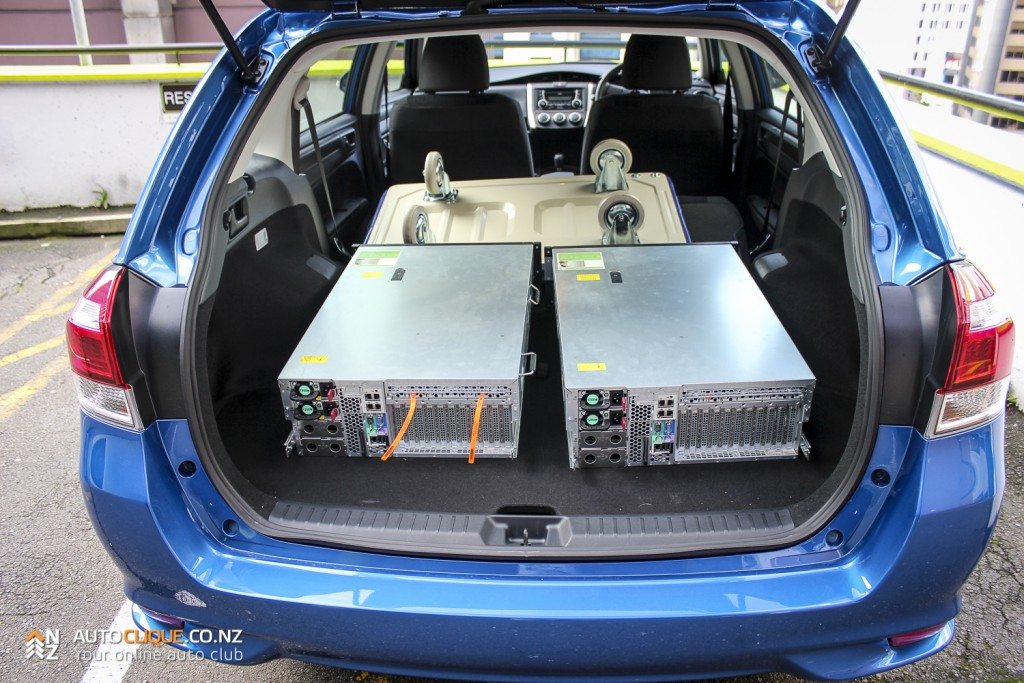
I grabbed the Corolla wagon when it came up as a test car as I had some big computer servers to move, and it seemed like perfect timing. Tidal Blue handled them easily, and the rear seats were a doddle to put down, even though I did it from the rear doors. The levers to drop the seats actually look like part of the reclining mechanism, but I spotted this crafty design and with one flick the seats dropped. If you carry heavy loads at night, the Corolla now has a manual headlight adjuster included. While we are on the rear seat – there is quite a bit of room back there. It is yet another surprise just how much legroom rear seat passengers have.
Safety is an “aimed to achieve” a 5-star ANCAP rating, with six air bags and two ISOFIX child seat mountings with twin tethers.
A woman’s POV
I hate driving. I hate driving in traffic, on the motorway, or in the city. I also hate driving our grey car (AKA The Slug), it’s too big and the pillar things at the front are really wide so it’s hard to see safely out the front. When Fred asked me to drive the blue car (AKA The Pocket-Rocket Smurf), I didn’t really want to – it takes me ages to get used to driving just one car. But I drove the blue car, and I really like it. It’s easy to see out of all the way around, and it’s really peppy – much more so than our grey car. I also like having a stereo that works (The Slug refuses to play some of my favourite CDs), but straight away I missed having the stereo buttons on the steering wheel.
I thought I had broken the blue car when it kept on stopping at the traffic lights, until I learnt this is a ‘feature’. One which I always turned off after I found that out. Just too freaky for me to handle.
Still, I told Fred I’d swap the Pocket-Rocket Smurf for The Slug in a heartbeat. He’s practising selective deafness…
Fred’s response
I asked Tracey if she’d like to drive the car, expecting her to say no straight away. She hates driving. But it was in the driveway in front of our daily driver, so she didn’t have much choice, she’d have to move it anyway. The biggest surprise was when she texted me not long after driving it to say, “I’d swap the grey car for the blue car in a heartbeat!” (note: this colour grading system is the extent of her automotive knowledge). I was pretty shocked. But the biggest shock came when we had to go somewhere and she offered to drive. This just doesn’t happen. It was like a scene out of Supernatural. Tidal Blue: 1. Fred: 0.
What it’s up against
Yet another surprise. There aren’t many station wagons in this segment. No Nissans, no Mazdas or Kias. Plenty of hatchbacks, but wagons with a 1.5l-ish 4 cylinder petrol auto are thin on the ground.
| Brand / Model | Engine | Power | Fuel L/100km | Price (Highest to Lowest) |
| Hyundai i30 wagon | 1.6L | 88kW/156Nm | 6.9 | $37,990 |
| Ford Focus Ambiente 1.6L Wagon | 1.6L | 92kw/159nM | 6.3 | $33,840 |
| Toyota Corolla GX wagon | 1.5L | 80kW/136Nm | 4.3 | $27,990 |
| VW Polo DSG | 1.2L | 66kW/160nM | 4.7 | $26,490 |
| Pros | Cons |
|
|
What do we think?
Could I live with Tidal Blue every day? I know my wife could, and would prefer to. I liked the Corolla. It was brainless to just get in and drive. It was light inside, peppy and ergonomics are great. But – there’s always a but – the car enthusiast in me would get a little bored. I need more than this. A shame they just didn’t stick to the 1.8L engine across the Corolla range.
However for the Corolla wagon’s target market the car is perfect, and many people who buy one would be totally happy with it – and then would go on to buy another one when the time came.
Rating – Chevron rating 4 out of 5
| Vehicle Type | Front Engine, FWD station wagon |
| Starting Price | $ 25,990 + on road costs |
| Tested Price | $ 27,990 + on road costs |
| Engine | 1.5L 4 Cylinder 16 valve VVT-i DOHC |
| Transmission | Automatic CVT with idle stop |
| 0 – 100 kph | 13.2 seconds |
| Kerb Weight/GVW | 1155/1545kg |
| Length x Width x Height | 4400 x 1695 x 1475 mm |
| Cargo Capacity | 872 Litres (rear seat down) |
| Fuel Tank | 42 litres |
| ANCAP Safety Ratings | “Aimed to achieve ANCAP 5-star safety rating” |


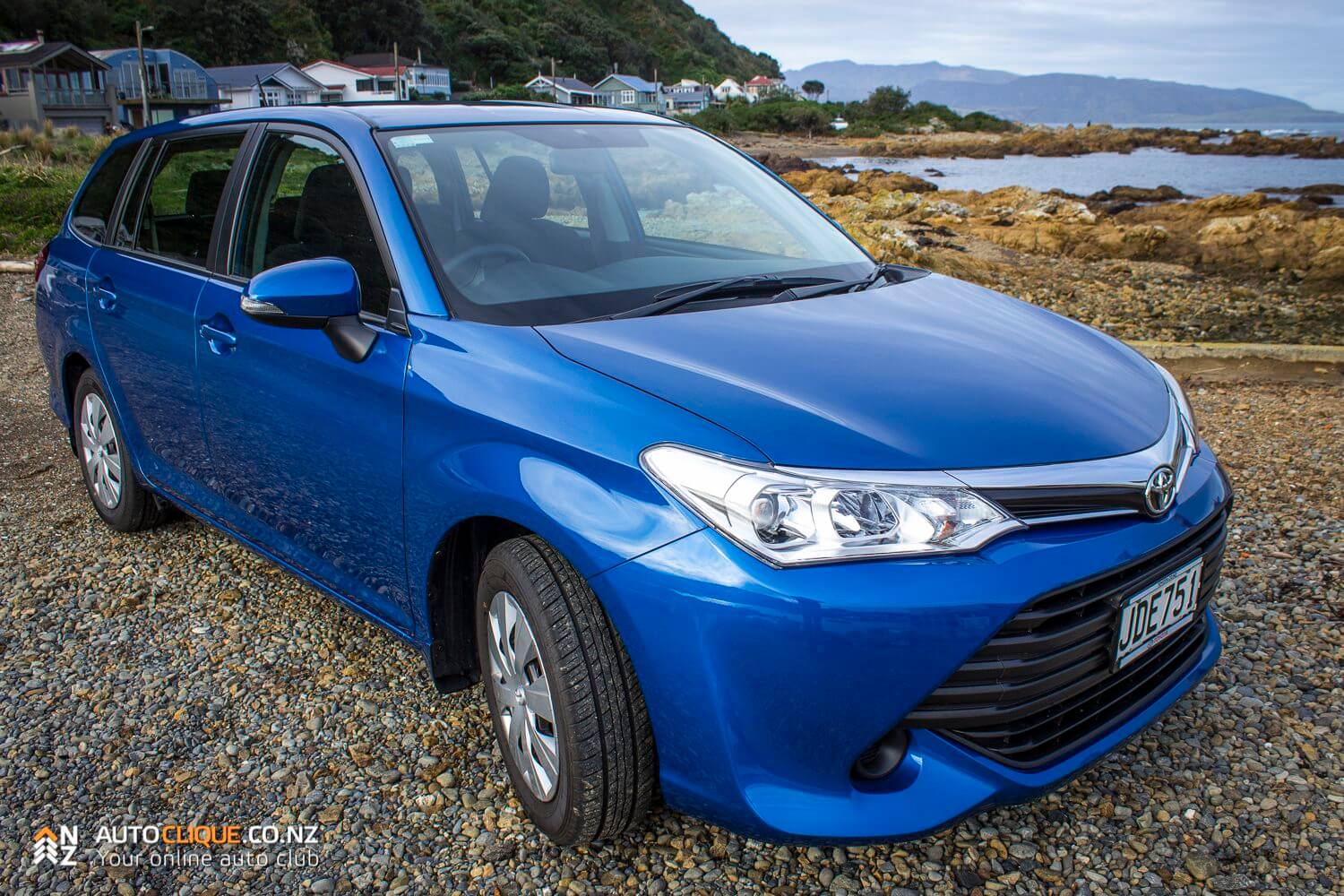
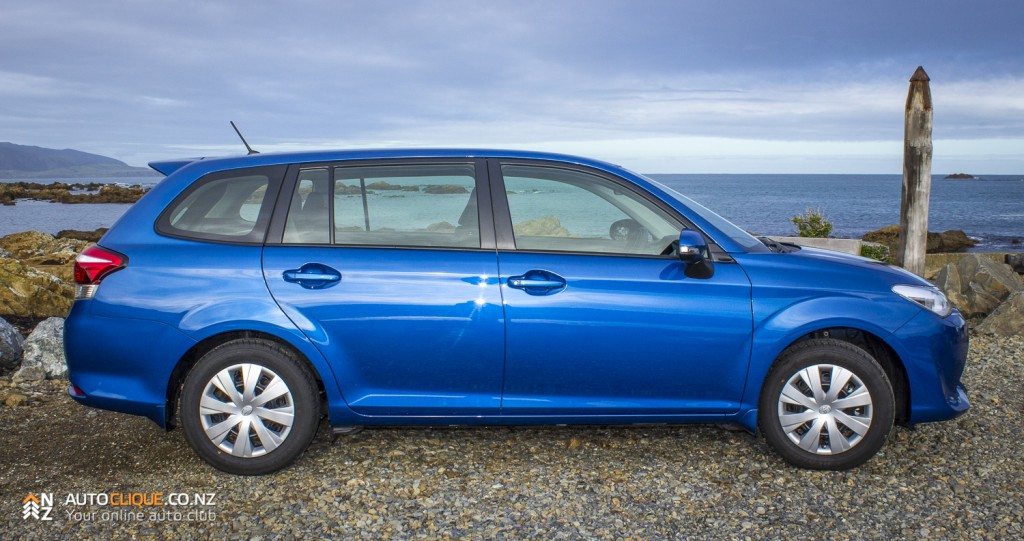
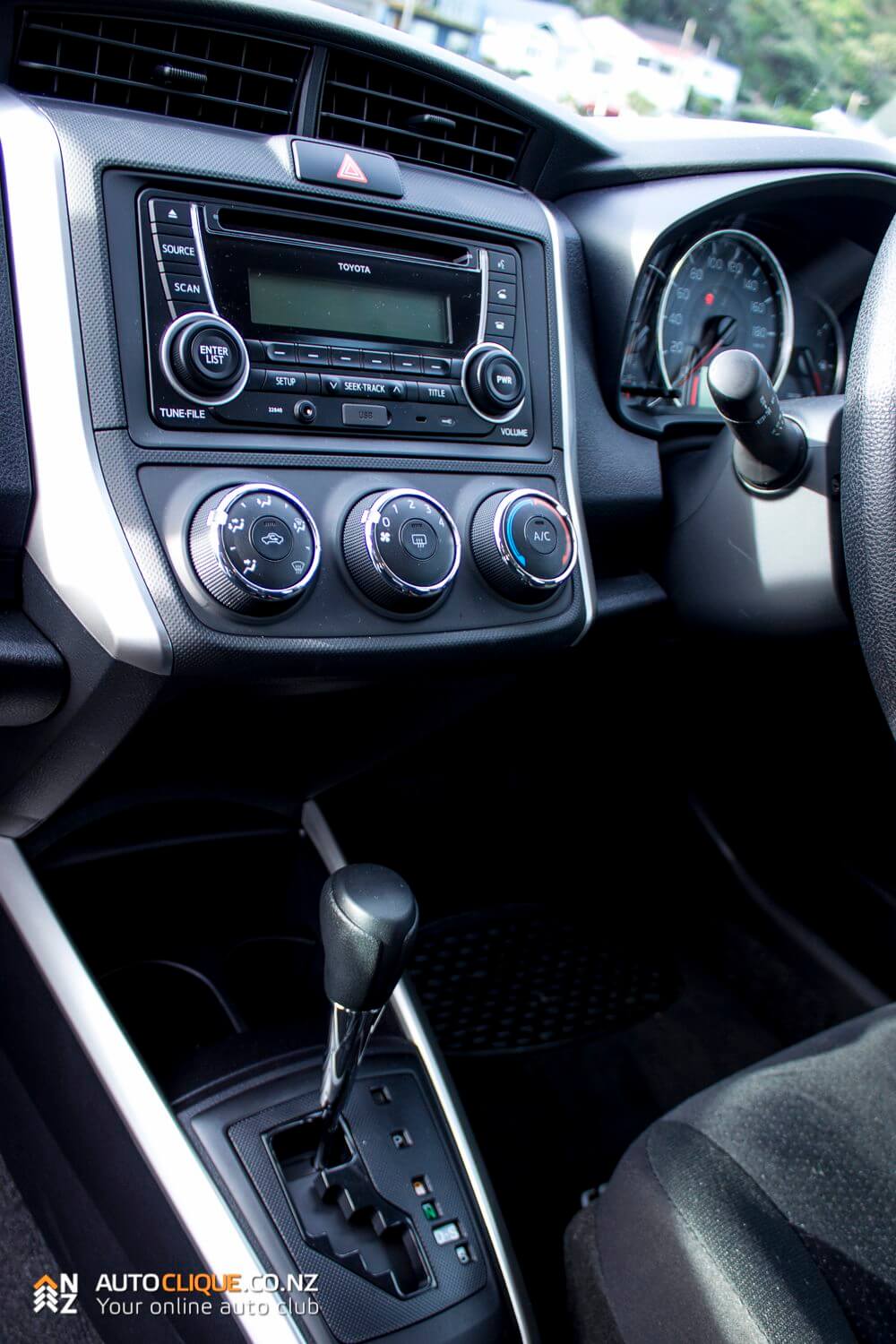
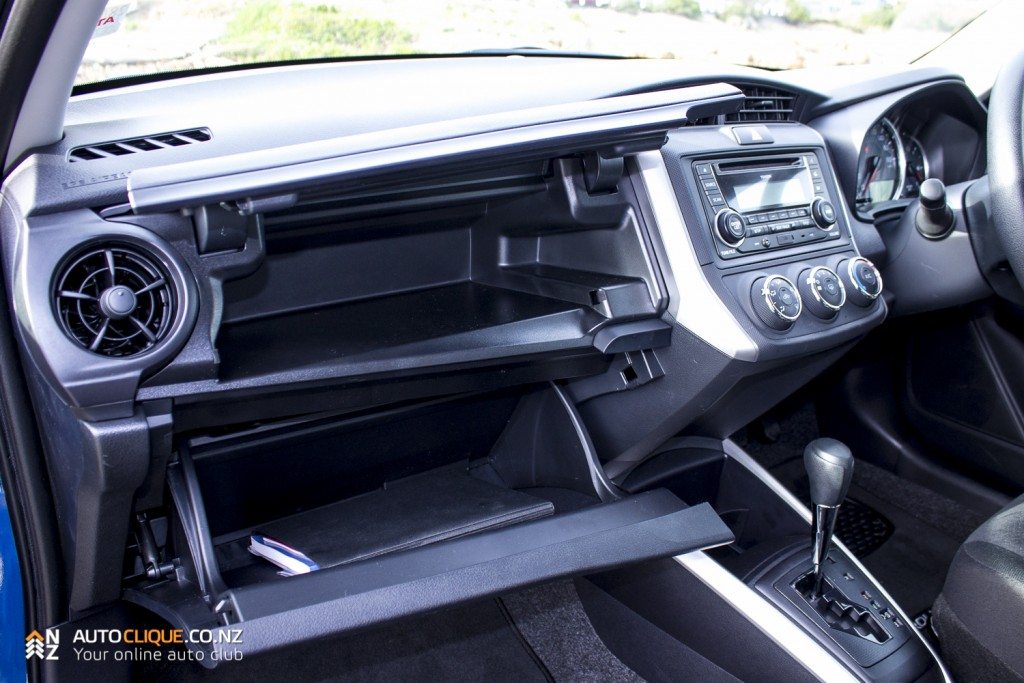
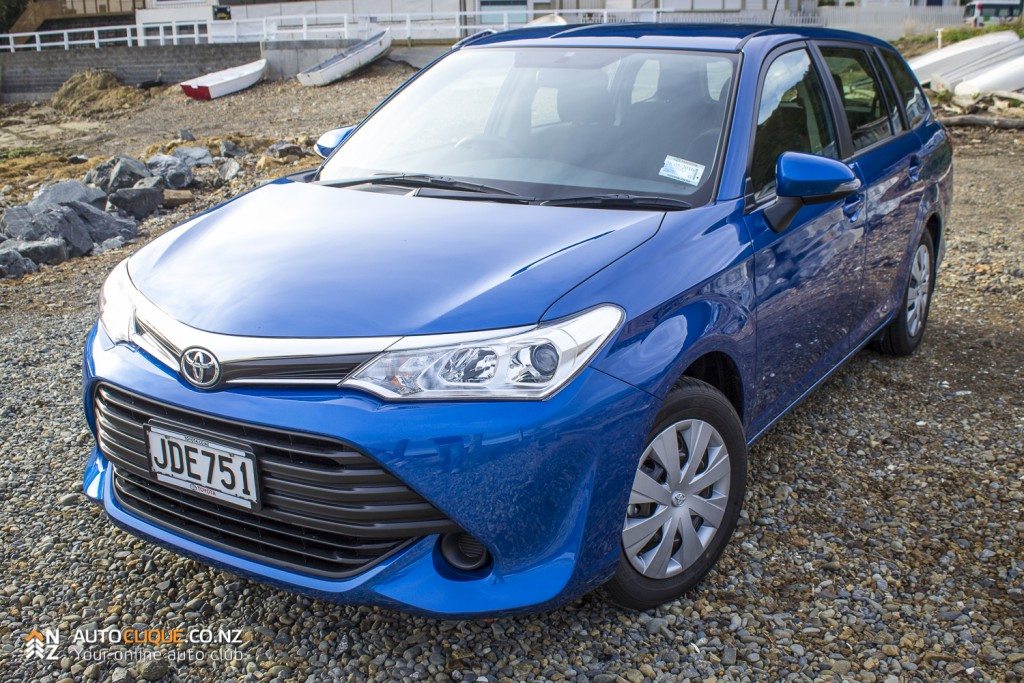
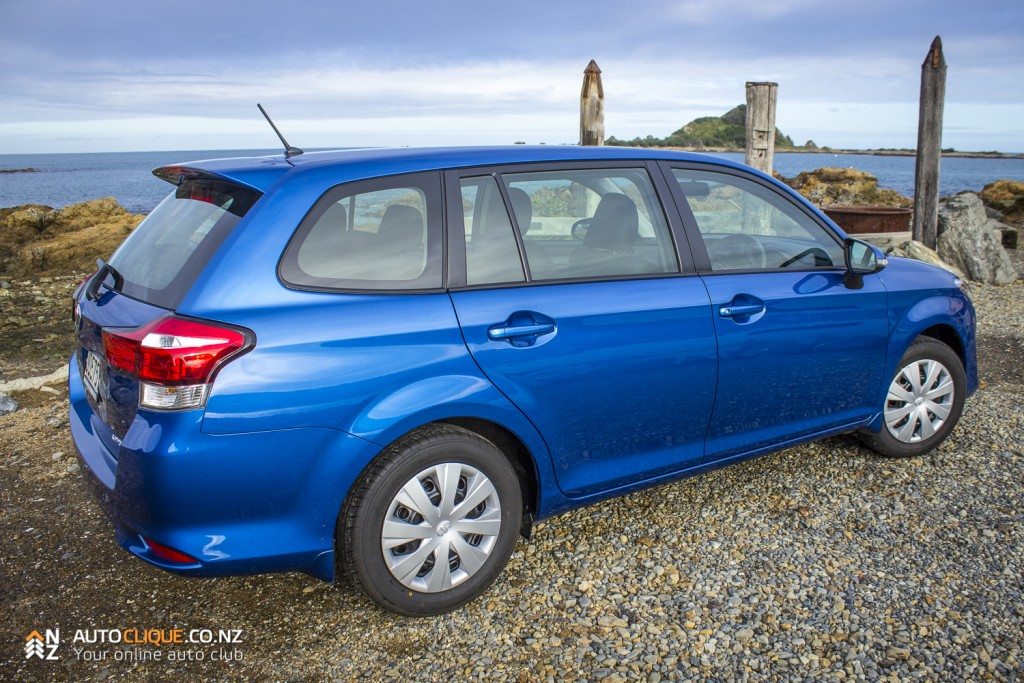
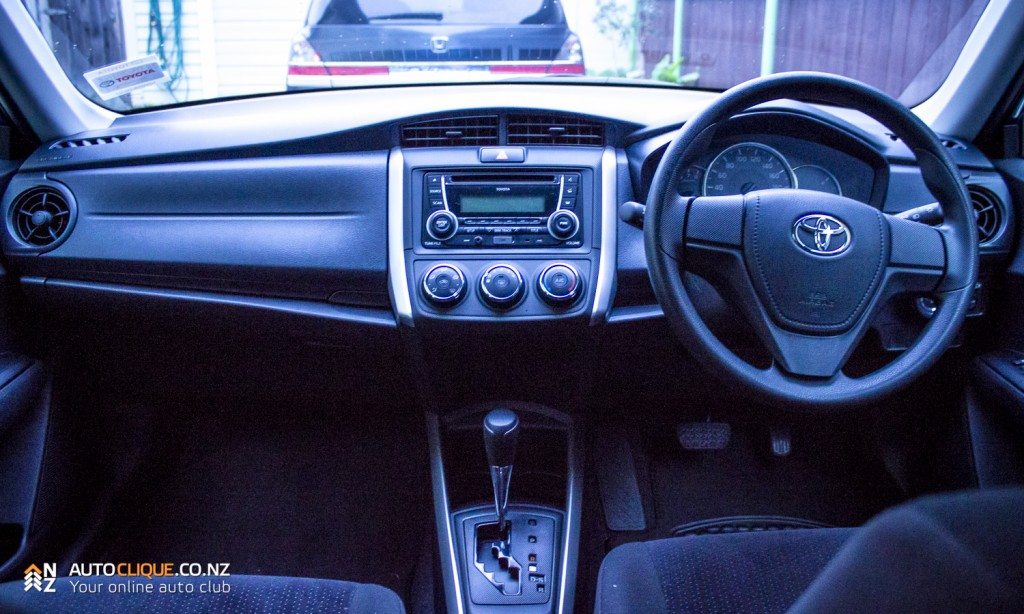
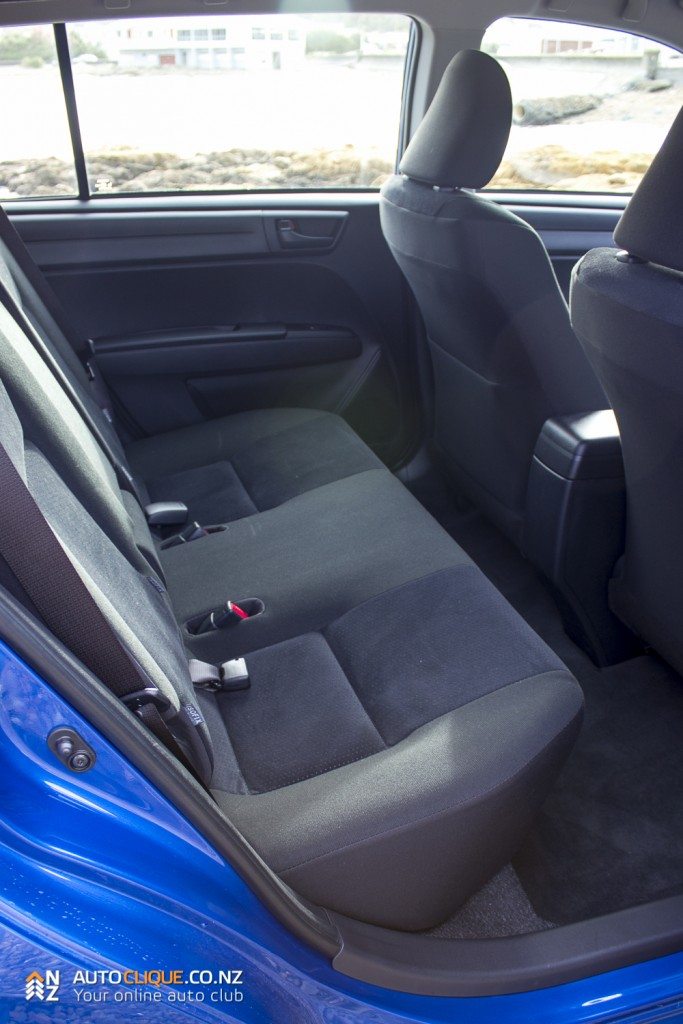

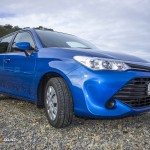
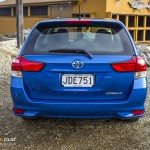
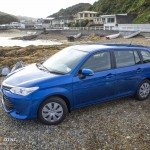
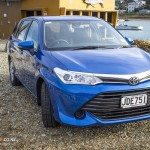
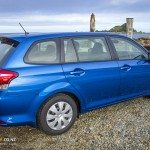
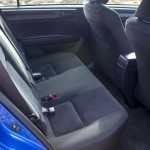
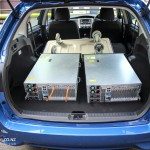
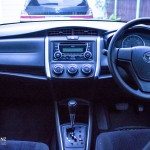
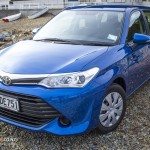











































this is the new zealand export version of the japanese Toyota Corolla axio fielder
Couldn’t find any reviews about this car anywhere! Thought there was something wrong with it!
But your review is good.
Thanks 🙂
HI Marko
Glad you found the article helpful – I still remember driving this one!
Cheers
Fred